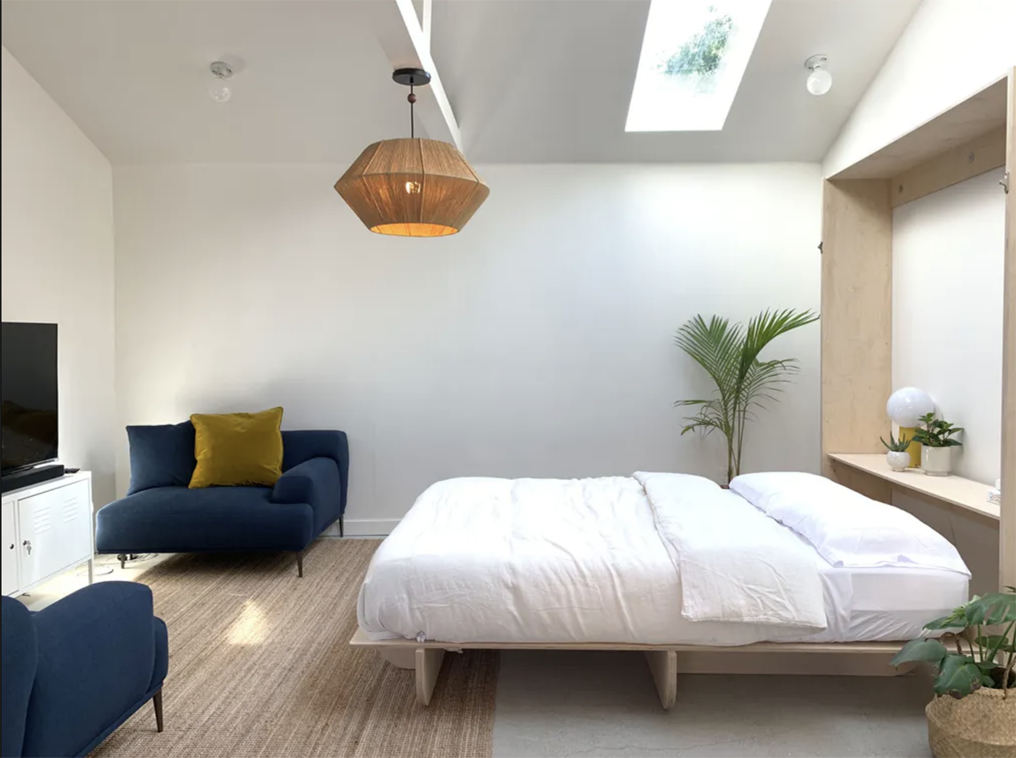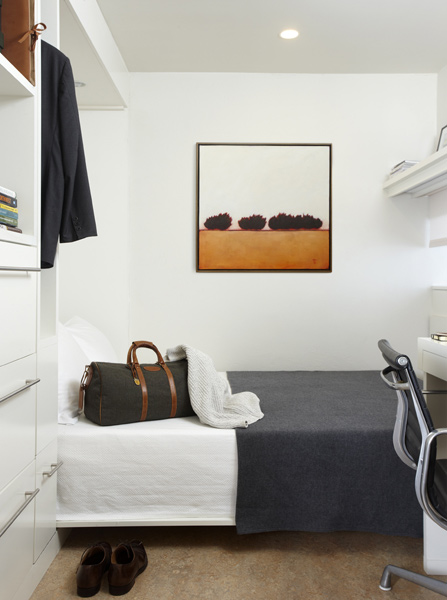Though residential spaces are becoming more and more expensive these days, they’re also becoming smaller in size. This article aims talks about the wall bed and how it can be used to help one make the most out of small living spaces.
Murphy beds have been around since the 1900s and were borne out of the need to make the most out of a one-room apartment. The Murphy bed has proved to be useful to so many people then but has also made quite a comeback in the early 2010s because a weak economy saw children moving back in with their parents or moving to small but affordable shared spaces.
The average size of newly built condominium spaces and apartments in the United States is becoming smaller. While they aren’t exactly “dream home” material, they give more people the opportunity to become homeowners as they are more affordable than the average home – the smaller the living space, the cheaper they are. And with the still skyrocketing prices for real estate these days, it’s no wonder that a lot of people choose to dwell in small spaces. With Murphy beds, this is a more doable (and comfortable) feat.
What is a Murphy Bed?

Murphy beds are more commonly known as wall beds or pull down beds. These beds are hinged at an end to attach to a wall vertically or horizontally. Users can then convert their living spaces from home offices or entertainment rooms, to cozy bedrooms by simply pulling down their beds.
A Brief History
Why are these beds called Murphy beds? Well, they were invented by a man named William Lawrence Murphy in the 1990s. Murphy had allegedly created the wall bed because he was trying to court an opera singer. Him living in a one-room apartment in San Francisco posed as a huge hurdle to his romantic endeavors as, back then, it was taboo for a woman to enter a man’s bedroom.
Foldup beds weren’t exactly a new thing then but Murphy’s design was unique in that involved counterbalance or counterweights. Murphy applied for patents for his designs, one of which was the “Disappearing Bed” which he applied for in June 1912.
Types of Murphy Beds
Traditional Murphy beds do not have box springs. The mattress lies on either a wooden platform or a wire mesh instead. It’s also attached to the actual bed frame using elastic straps. These straps hold the mattress in position so it doesn’t sag when it is folded.


Murphy beds have come a long, long way since its creation in the 1990s. Back then, they were as simple as simple could be. Now, they have evolved and adapted to today’s interior design trends. Some beds come with its own frame and some beds are able to disappear into the wall when folded.
Even with all the different styles and designs of these wall beds, the basic configurations remain the same: vertical and horizontal.
Vertical Wall Beds
Vertical wall beds are wall beds that are hinged vertically to the wall so that it can be pulled down from the bed’s bottom.
Horizontal Wall Beds
In the same way, horizontal wall beds are those that are hinged horizontally to the wall. They are pulled down from the bed’s left or right side.
Murphy Bed Upgrades
The wall beds of today are not only aesthetically better than their predecessors, they’re functionally better as well. This means that they’re not just beds, they serve other purposes as well, providing its users more value and bang for their buck.
The most common wall bed upgrades include:
- Lighting Upgrades
Some wall beds come with built-in lighting systems. These beds are usually made for dorms or boarding houses where students can benefit from having lighting already built in the bed frame for studying or working at night.
Some downsides to this upgrade include the increased cost and weight. Installing a lighting system also isn’t exactly the easiest thing to do. Even for experienced professionals, this would still add extra steps in the installation process.
- Storage Upgrades
Storage upgrades in wall beds are pretty handy for homeowners with very little space to work with. These storage upgrades can come in the form of extra shelves or drawers and allow homeowners to save on storage furniture and maximize the space they have.
- Sound System Upgrades
This is a more modern upgrade that is more of a luxury than a necessity. Having a built-in sound system in one’s wall bed removes the need to have bulky speakers around the room. That makes this upgrade perfect for entertainment rooms!
- Seating Conversions
To save even more space, some Murphy beds convert from couches to beds. This wall bed is great for living rooms and one-room apartments, getting rid of the need for separate seating furniture. This shouldn’t be mistaken for a sofa bed, though. Unlike sofa beds, these beds are still attached to the wall.
This upgrade makes for a smooth room conversion, allowing homeowners to quickly switch from a living room where they can entertain guests, to a bedroom to retire for the night.

Using Murphy Beds in Small Living Spaces
People buy wall beds mainly for these two reasons: 1) they convert any space into a bedroom; 2) they’re incredibly space-saving. That said, the wall bed’s functionality makes it perfect for small spaces.
The key to making a murphy bed work for your space is to squeeze out as much function as you can out of its folded form. As a bed, its main function is to provide you with a cozy space to sleep in. But when its stored and folded up, it should serve a purpose as well. Otherwise, unless your wall bed totally disappears into the wall, it would just be a big, space-consuming block in your already short-of-space room.
The easiest way to add function to your wall bed is to add storage upgrades to it. When it’s not set up as a bed, it could act as a cabinet that can store your things. As a bonus, this saves you even more space! Thanks to Lori Wall Beds for contributing!
Leave a Reply